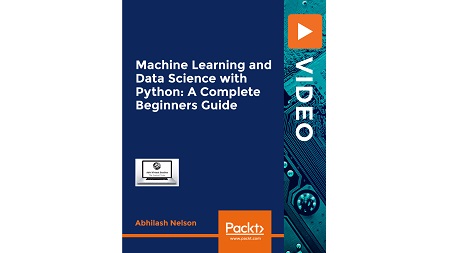
English | MP4 | AVC 1920×1080 | AAC 48KHz 2ch | 10h 19m | 5.28 GB
Machine Learning and Data Science for programming beginners using Python with Scikit-learn, SciPy, Matplotlib and Pandas
Artificial intelligence, machine learning, and deep learning neural networks are the most used terms nowadays in the technology world. They’re also the most misunderstood and confused terms too. Artificial intelligence is a broad spectrum of science which tries to make machines intelligent like humans. Machine learning and neural networks are two subsets that comes under this vast machine learning platform. But in this course, we will focus mainly on machine learning. Throughout this course, we will prepare our machine to make it ready for a prediction test.
We will use Python as our programming language. Python is a great tool for the development of programs that perform data analysis and prediction. It has tons of classes and features that perform complex mathematical analyses and give solutions in simple one or two lines of code, so we don’t have to be a statistic genius or mathematical nerd to learn data science and machine learning.
Machine learning and data science jobs are the most lucrative in the technology arena nowadays. Learning this course will make you equipped to compete in this area.
Exhaustive and packed with step-by-step instructions, working examples, and helpful advice, this course is divided into clear chunks so you can learn at your own pace and focus on your own area of interest.
Learn
- Machine learning
- Data science using Python
Table of Contents
1 Course Overview & Table of Contents
2 Code Password
3 System and Environment preparation
4 Learn Basics of python
5 Learn Basics of NumPy
6 Learn Basics of Matplotlib
7 Learn Basics of Pandas
8 Understanding the CSV data file
9 Load and Read CSV data file
10 Dataset Summary
11 Dataset Visualization
12 Data Preparation
13 Feature Selection
14 Refresher Session – The Mechanism of Re-sampling, Training and Testing
15 Algorithm Evaluation Techniques
16 Algorithm Evaluation Techniques
17 Classification Algorithm Spot Check – Logistic Regression
18 Classification Algorithm Spot Check – Linear Discriminant Analysis
19 Classification Algorithm Spot Check – K-Nearest Neighbors
20 Classification Algorithm Spot Check – Naive Bayes
21 Classification Algorithm Spot Check – CART
22 Classification Algorithm Spot Check – Support Vector Machines
23 Regression Algorithm Spot Check – Linear Regression
24 Regression Algorithm Spot Check – Ridge Regression
25 Regression Algorithm Spot Check – LASSO Linear Regression
26 Regression Algorithm Spot Check – Elastic Net Regression
27 Regression Algorithm Spot Check – K-Nearest Neighbors
28 Regression Algorithm Spot Check – CART
29 Regression Algorithm Spot Check – Support Vector Machines (SVM)
30 Compare Algorithms – Part 1 Choosing the best Machine Learning Model
31 Compare Algorithms – Part 2 Choosing the best Machine Learning Model
32 Pipelines Data Preparation and Data Modelling
33 Pipelines Feature Selection and Data Modelling
34 Performance Improvement Ensembles – Voting
35 Performance Improvement Ensembles – Bagging
36 Performance Improvement Ensembles – Boosting
37 Performance Improvement Parameter Tuning using Grid Search
38 Performance Improvement Parameter Tuning using Random Search
39 Export, Save and Load Machine Learning Models Pickle
40 Export, Save and Load Machine Learning Models Joblib
41 Finalizing a Model – Introduction and Steps
42 Finalizing a Classification Model – The Pima Indian Diabetes Dataset
43 Quick Session Imbalanced Data Set – Issue Overview and Steps
44 Iris Dataset Finalizing Multi-Class Dataset
45 Finalizing a Regression Model – The Boston Housing Price Dataset
46 Real-time Predictions Using the Pima Indian Diabetes Classification Model
47 Real-time Predictions Using Iris Flowers Multi-Class Classification Dataset
48 Real-time Predictions Using the Boston Housing Regression Model
Resolve the captcha to access the links!